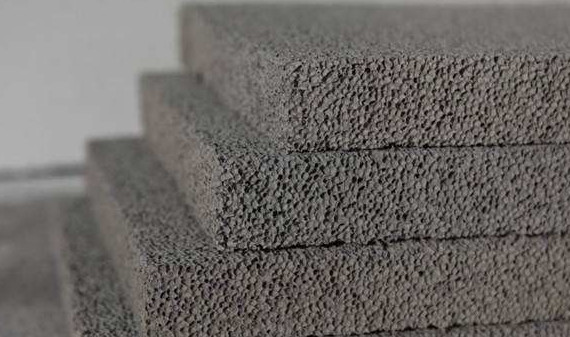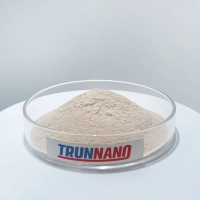Professional solutions on concrete addtives, Concrete Foaming Agent, Superplasticizer, CLC Blocks Additives, and foaming machine
(Problems in the application of polycarboxylic acid superplasticizer)
Due to the differences of raw materials and regional environment in the process of ready-mixed concrete, as well as the cognitive limitations, usage habits and theoretical cognitive level of technicians, there are some problems in the process of using polycarboxylate superplasticizer, which directly affect the effect of polycarboxylate superplasticizer.
At present, the action mechanism and self-sensitivity of polycarboxylic acid superplasticizer can not be completely controlled.
Especially in practical engineering, due to many kinds of cement, sand and mud content in concrete raw materials and so on, when polycarboxylic superplasticizer is directly applied to concrete, there are often some problems, such as poor adaptability to cement, poor working performance of concrete, large collapse and so on, which can not meet the requirements of the construction site.
Only by properly dealing with the following series of problems, can polycarboxylate superplasticizer be used stably, efficiently and on a large scale in concrete engineering.
1 Adaptability of cement
The adaptability between concrete admixture and cement has always been an insurmountable problem, and polycarboxylate superplasticizer is no exception.
The composition, specific surface area, alkali content, type and content of gypsum of cement will affect the adaptability of superplasticizer and cement.
The results show that the higher the content of C3A in cement, the larger the specific surface area and the higher the alkali content, the worse the fluidity of concrete.
Shang Yan and other studies show that gypsum content and crystal morphology have a great influence on the adsorption behavior of carboxylic acid superplasticizer on the surface of cement particles, thus affecting the dispersion of cement particles.
With the increase of gypsum content, the soluble concentration in the solution increases, which will form a competitive adsorption situation with polycarboxylate superplasticizer, sharply reduce the adsorption rate of polycarboxylic acid, and seriously affect the adsorption and dispersion effect of polycarboxylate superplasticizer.
In addition, the SO42- ion contained in cement also has a great influence on its application effect.
A large number of SO 42-ions will directly affect the adsorption capacity of polycarboxylic acid superplasticizer molecules to cement particles, resulting in the water-reducing effect of superplasticizer is greatly weakened, so there is the problem of water secretion.
The research and engineering practice show that when superplasticizer is mixed into cement, some problems may be encountered, such as low water reducing rate, low fluidity of pulp, poor fluidity, serious bleeding and so on.
2 Sensitivity
With the rapid development of infrastructure projects in China, a large number of high-quality natural sand and gravel aggregates have been gradually consumed, which can not meet the needs of the project.
The river sand with high mud content, weathered river sand and artificial sand potential with high silt content will be widely used in engineering.
Because of the high sensitivity of polycarboxylate superplasticizer, it will be a test for the quality of concrete engineering.
2.1 Clay sensitivity
A large number of studies have shown that the high content of clay has a great influence on the performance of concrete.
Because of the high mud content in clay, the adsorption capacity to superplasticizer and water is relatively strong, which seriously affects the fluidity and slump retention of concrete; at the same time, it reduces the fluidity of paste and the poor connection of particles between clay, weakens the interface between aggregate and paste, and may form a space in concrete, which directly affects the strength and durability of concrete.
For concrete mixed with superplasticizer, the effect of polycarboxylate superplasticizer on the fluidity loss of naphthalene superplasticizer and aliphatic superplasticizer is more obvious than that of mud content.
Its fluidity decreases rapidly with the increase of mud content, and the fluidity is completely lost when the mud content reaches 4%.
Thus it can be seen that polycarboxylic acid superplasticizer is extremely sensitive.
2.2 Sensitivity of stone powder
As a kind of attachment of machine-made sand, stone powder will inevitably be mixed into concrete.
Stone powder is also uncontrollable to cementitious materials and superplasticizer.
According to the research, when the amount of stone powder is small, it plays a filling effect in the cement, so that the pores between particles become smaller.
In this way, the content of pore water becomes less, the free water increases, and the fluidity of the paste becomes larger; at the same time, the crystal nucleus effect of stone powder and participation in hydration reaction are beneficial to enhance the strength of concrete.
However, when its content is on the high side, the effect of stone powder adsorbing superplasticizer is obviously enhanced, and the adaptability to polycarboxylic acid superplasticizer is seriously reduced. in the process of ready-mixed concrete, keeping the original mix ratio will directly lead to the strength of the concrete can not reach the expected effect.
3 Water-cement ratio
In the actual process of ready-mixed concrete, the raw materials used in the concrete mixing plant can not remain the same.
Sometimes in order to ensure the good fluidity of concrete, the method of changing the water consumption per unit cubic meter is usually adopted.
However, in the process of use, it will be found that this traditional empirical method is not suitable for polycarboxylate superplasticizer, mainly because polycarboxylate superplasticizer is more sensitive to water consumption than traditional superplasticizer.
When the water consumption is reduced, the expected workability of concrete can not be achieved; when the water consumption is on the high side, although the slump becomes larger, there will be a large amount of water bleeding and even a little segregation, which has a great impact on the overall working performance of concrete, which leads to a lot of inconvenience in the actual site construction.
Compatibility of polycarboxylicate superplasticizer with other admixtures.
In order to better optimize the performance of superplasticizer, the mixture of admixtures is usually selected.
Traditional lignin, nanosystems and aliphatic groups can be miscible and compounded in any proportion, but polycarboxylic acid superplasticizer due to its own.
Concrete additives Supplier
TRUNNANO is a reliable concrete additives supplier with over 12-year experience in nano-building energy conservation and nanotechnology development.
If you are looking for high-quality concrete additives, please feel free to contact us and send an inquiry. (sales@cabr-concrete.com)
We accept payment via Credit Card, T/T, West Union, and Paypal. TRUNNANO will ship the goods to customers overseas through FedEx, DHL, by air, or by sea.
(Problems in the application of polycarboxylic acid superplasticizer)








